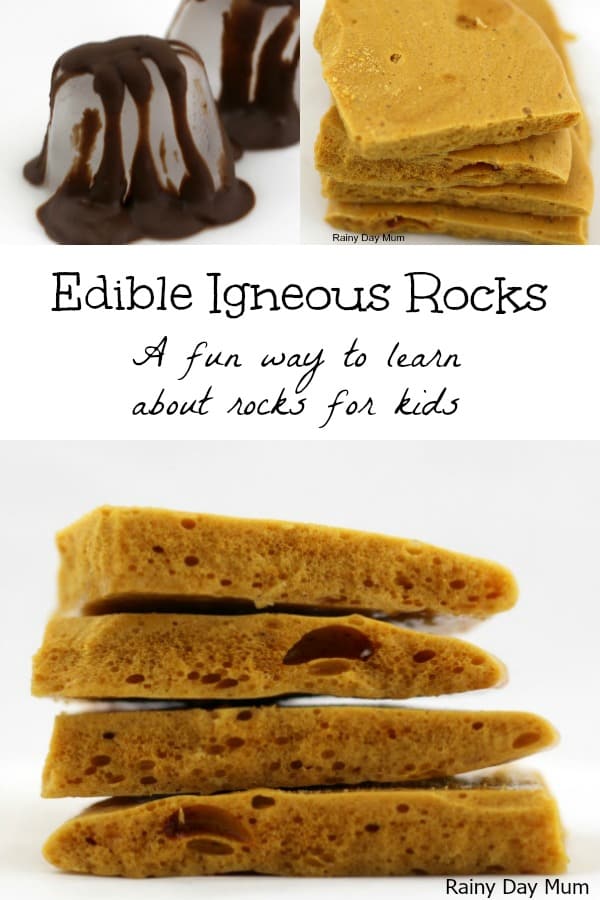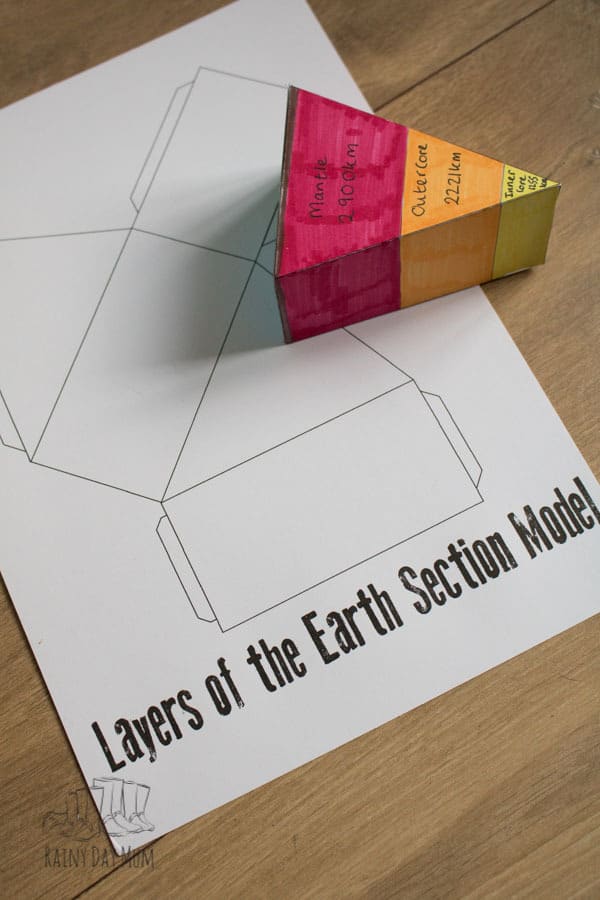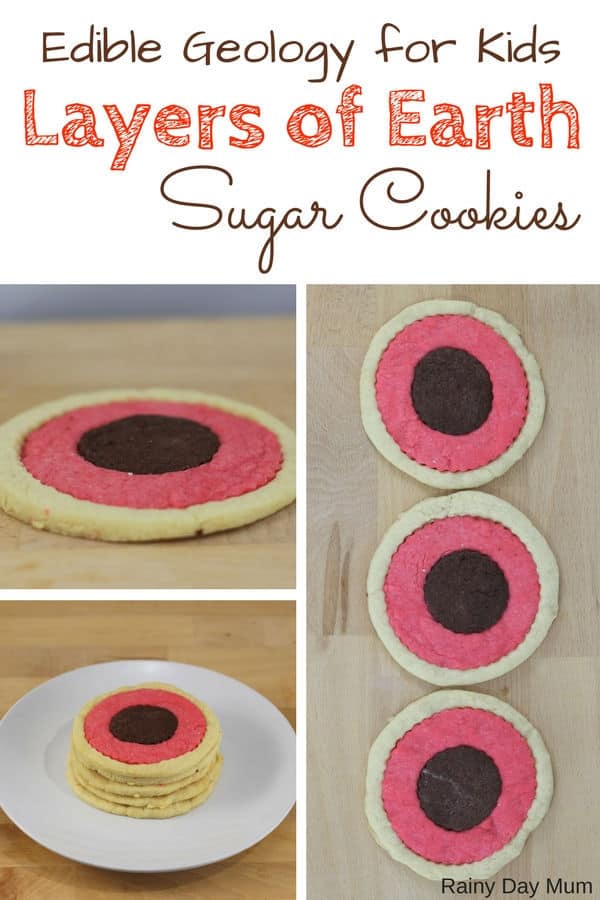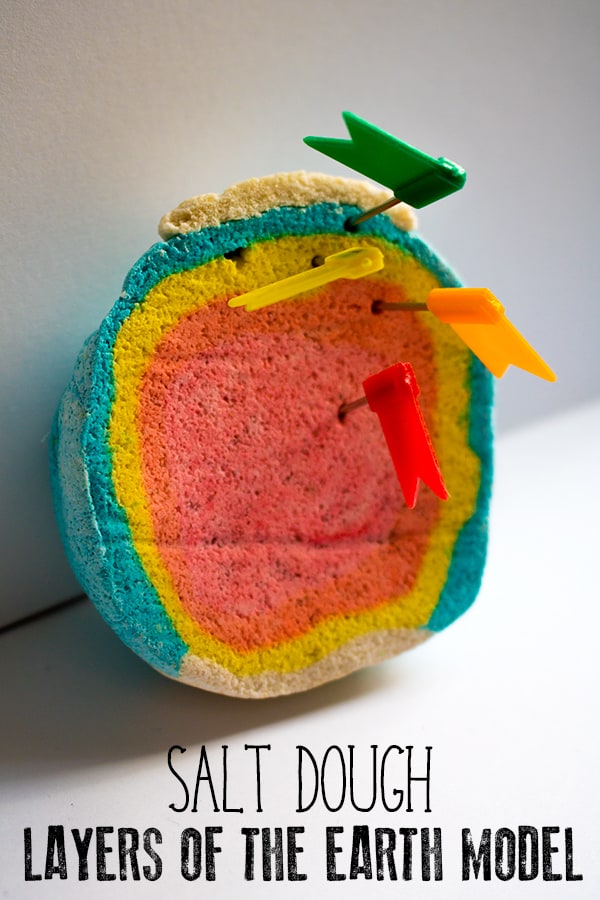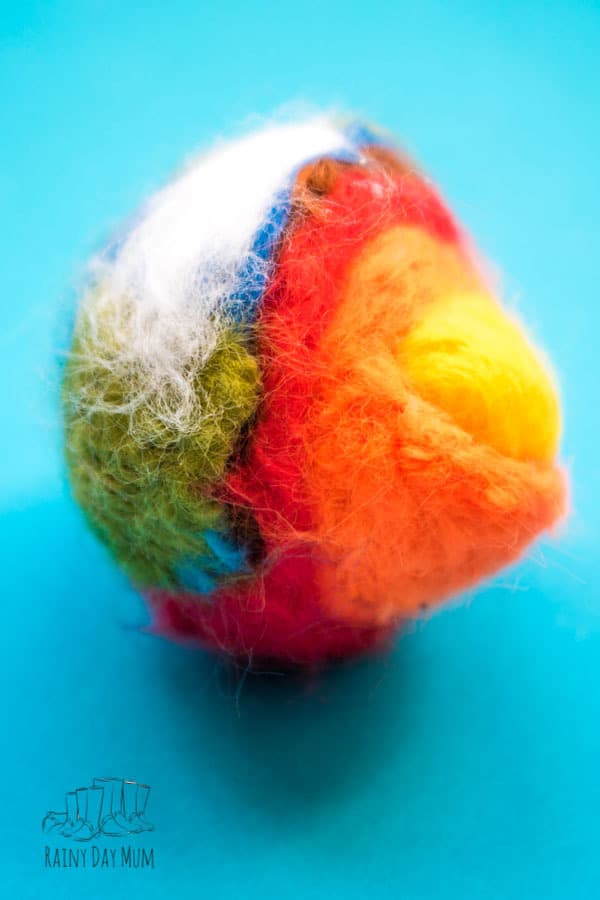Fun Hands-on Volcano Science for Kids
We’re continuing our rock activities for Earth Science by learning about volcanoes. Volcano science is an interesting part of geology that kids really love. Make a classic baking soda and vinegar volcano and then experiment to see if you can change up the recipe to create different types of volcanoes.
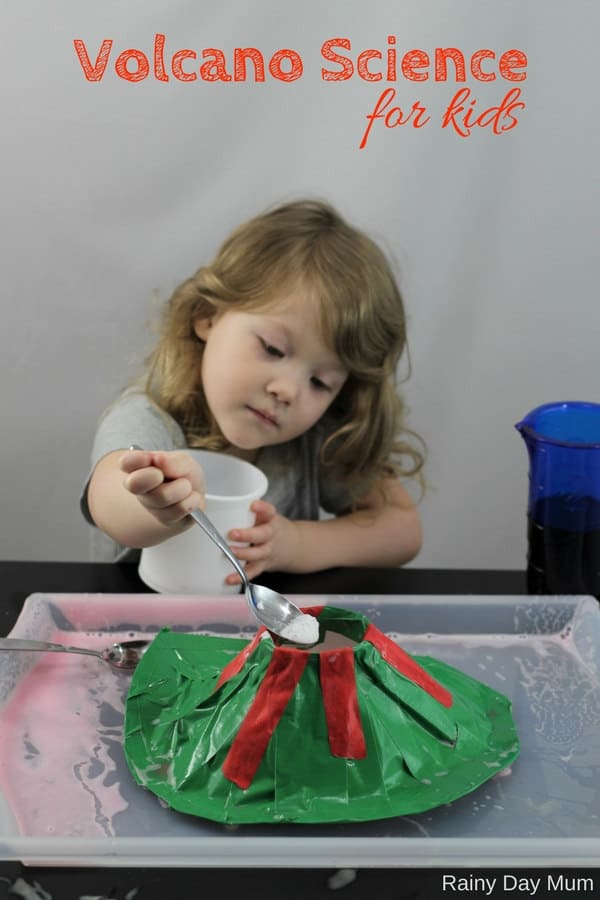
How to Make the Classic Baking Soda and Vinegar Volcano
We have included affiliate links to products and resources we recommend. If you purchase via these links we may earn a small commission.
Materials Needed to make your Classic Baking Soda and Vinegar Volcano
Paper Cup
A piece of recycled cardboard
Making your Simple Volcano
There are many ways to make a volcano, but all you really need is baking soda, vinegar, maybe a little food coloring or washable paint, and a volcano-shaped container. Your volcano material choices can be simple (a cup) or elaborate (like a paper mache volcano landscape). Be inspired by one of these 10 ways to make a volcano.
For our volcano, we made an easy tape volcano with a paper cup, green duct tape, red masking tape, and a piece of cardboard.
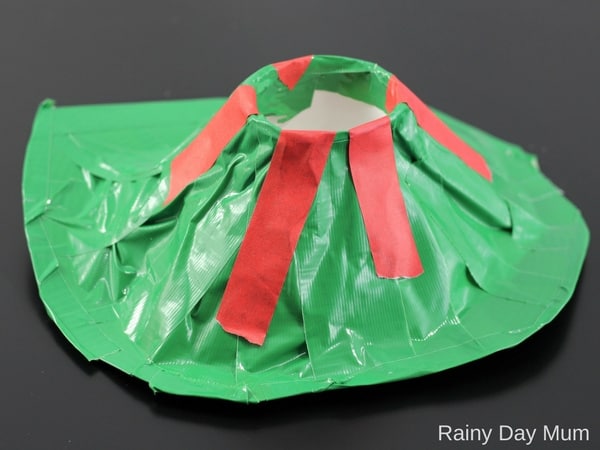
Add a couple of tablespoons of baking soda to the cup. Then pour in about a cup of colored vinegar. You can use food coloring (be warned: it has the potential to stain) or washable liquid watercolors.
Your volcano will erupt because of the reaction between baking soda and vinegar.
Love Volcanoes and want to know more we’ve put together our selection of the best kids books about Volcanoes (and earthquakes) for you and them to read.
The Science Behind the Experiment
[Baking soda (sodium bicarbonate) is a base and vinegar (acetic acid) is an acid. When combined, they react to form water, a salt (sodium acetate), and carbon dioxide gas. The bubbles produced by the reaction are the carbon dioxide gas escaping the water.] This is not the same reason that volcanoes erupt and this experiment is just used to “view” how a volcano looks for kids and give them a safe way for experiment with the different ways that volcanoes erupt

Why do Volcanoes Erupt?
Volcanoes can occur in three types of places on our Earth –
(1) on subduction zones where one tectonic plate is going under another plate,
(2) on rifts where the tectonic plates are spreading apart, and
(3) on hot spots not at a tectonic boundary.
There is a lot of heat and pressure in the areas where volcanoes occur.
Volcanoes have magma under the surface. As the magma heats up, it becomes less dense than the surrounding rock and it rises to the surface. The magma contains gas bubbles. The gas bubbles also exert pressure on the magma. It’s the number of bubbles (and the amount of pressure) that helps determine how a volcano will erupt.
Some volcanoes erupt violently shooting particles into the sky. Other volcanoes erupt more gently and ooze lava. (Think about the Hawaiian volcanoes as an example.) The more bubbles in the magma, the more explosive the eruptions will be. Learn more about eruption styles and the Volcanic Explosivity Index here.

Volcano Science for Kids: Conduct a Volcano Experiment
Materials Needed for your Volcano Experiment
As above PLUS
Different cups or bottles to hold the volcano eruption from the recycling box
Experimenting with why volcanoes erupt differently
After learning about the explosivity of volcanoes, we were interested in trying to change how a model volcano would erupt. Since the amount of bubbles affects how explosive a real volcano is, we wondered if the number of bubbles could affect a model volcano’s eruption.
We experimented with different amounts of baking soda and vinegar. We also added dish soap and cornstarch to some containers.
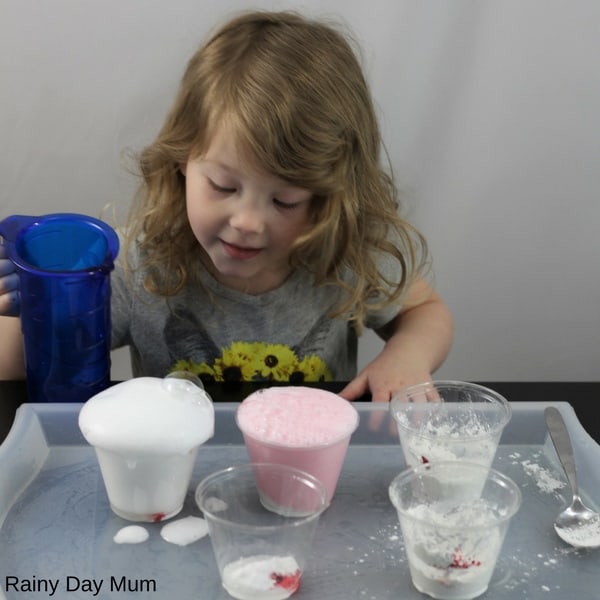
The plastic cups contained the following amounts:
Cup 1: 1 tablespoon of baking soda, 1 tablespoon of dish soap, ½ cup of vinegar
Cup 2: 2 tablespoons of baking soda, 1 tablespoon of dish soap, ½ cup of vinegar
Cup 3: 2 tablespoon of baking soda, 1 tablespoon of dish soap, 1 cup of vinegar
Cup 4: 1 tablespoon of baking soda, 2 tablespoons cornstarch, 1 tablespoon of dish soap, 1 cup of vinegar
Cup 5: 2 tablespoon of baking soda, 2 tablespoons cornstarch, 1 tablespoon of dish soap, 1 cup of vinegar

We easily modeled volcanoes with a low explosivity using baking soda and vinegar. The addition of cornstarch made the slowest erupting volcano. Adding the entire cup of vinegar quickly made the quickest erupting volcano. When we added vinegar more slowly, the reaction was slower.
Even more Hands-on Activities for Kids
Looking for more ideas like this to do with the kids then join our weekly newsletter for hands-on activities that you and they can do. This is ideal for parents, homeschoolers and teachers. All of the activities shared are fun, educational and support children learning.
Create a Volcano with Hydrogen Peroxide and Yeast
In addition to baking soda and vinegar, we tried creating a volcano with hydrogen peroxide and baker’s yeast. (The classic elephant’s toothpaste demonstration produces an explosive result.)
Most people have 3% hydrogen peroxide in their first aid kit, so that’s what we used. (The elephant toothpaste demo uses 6% hydrogen peroxide.)
First, you’ll need to activate the yeast. Combine 2 ¼ teaspoons of dry active yeast (from the baking aisle) with ¼ cup of warm water. (Make sure the water is not too hot or it will kill the yeast.)
Combine ½ cup of hydrogen peroxide with a squirt of dish soap (don’t use antibacterial soap), and liquid watercolors or food coloring.
[Safety goggles are needed for this activity.] Add the yeast mixture to your volcano. Pour in the hydrogen peroxide mixture.
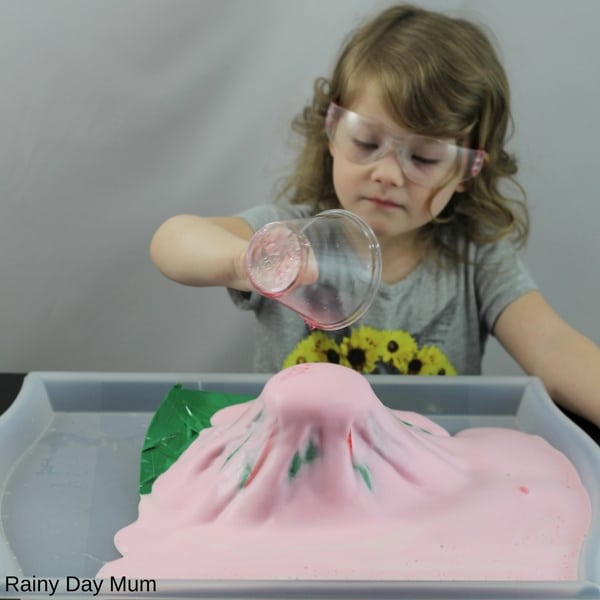
Since we used 3% hydrogen peroxide, the volcano eruption was gentle and oozy. My daughter actually preferred this version to the baking soda and vinegar volcanoes because the lava kept flowing for quite a while. The soapy foam is totally safe to touch. It might be a little warm.
If you use 6% hydrogen peroxide, you will see a more explosive eruption. Changing the size of your volcano’s opening will produce a higher eruption as well. Try using a small soda bottle.
Resources for Reading and Exploring Volcanoes With Kids
I love the National Geographic Books for Kids – the images are usually outstanding and the author gears their writing exactly for the right age range. This National Geographic Kids Volcanoes Book is an easy reading introduction to volcanoes that kids will like to look at and read with you.
For older children, I like the non-fiction books in the DK Eye Witness series. Their Volcanoes and Earthquakes book is full of facts and also explores moments in history connecting across subject areas.
If you wish to explore the history connection more and in particular ancient history then the Magic Tree House – Vacation Under the Volcano is a good start and with the accompanying book Ancient Rome you can dig into Pompeii and the Volcanic Eruption that destroyed the city.
You can buy many volcano kits but finding one that isn’t just a plaster cast model that you make and then use baking soda and vinegar it is a little challenging. One of the reasons that I like the Magic School Bus Chemistry Kit is that there is a variety of experiments included and it’s not just fun but educational too.
More Geology Activities for Kids
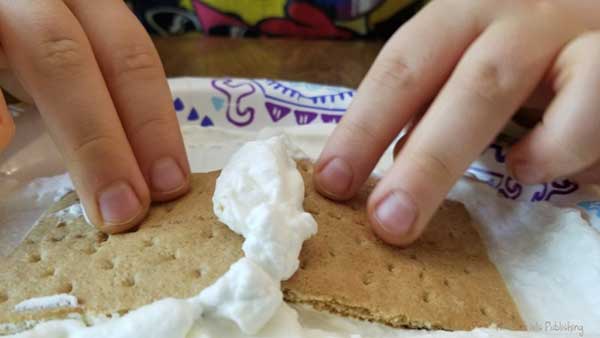
Make some edible models to show how plate tectonics create mountains and valleys (and even volcanoes!)
Volcanoes are responsible for forming igneous rocks. Learn more about igneous rocks with this edible igneous rock activity.
Look at the Earth Below the Surface to see where the Magma can be found to produce Volcanoes
Magna comes from the mantle of the earth, as you talk about the different types of volcanoes with your children why not introduce the Layers of the Earth and these fun hands-on models to show and discuss what happens underneath our feet.
3D Layers of the Earth Sectional Model
Layers of the Earth Sugar Cookies
Salt Dough Layers of the Earth Model
Needle Felted Layers of the Earth Model
Pin These Fun Volcano Experiments to Do Later

Share these simple science experiments to model the ways that volcanoes erupt

Trisha Stanley
Trisha is an educator with a passion for science literacy and mom to Aiden, Lily, and Elon.
She’s the creator of Inspiration Laboratories, a blog dedicated to encouraging learning through creativity and play.


